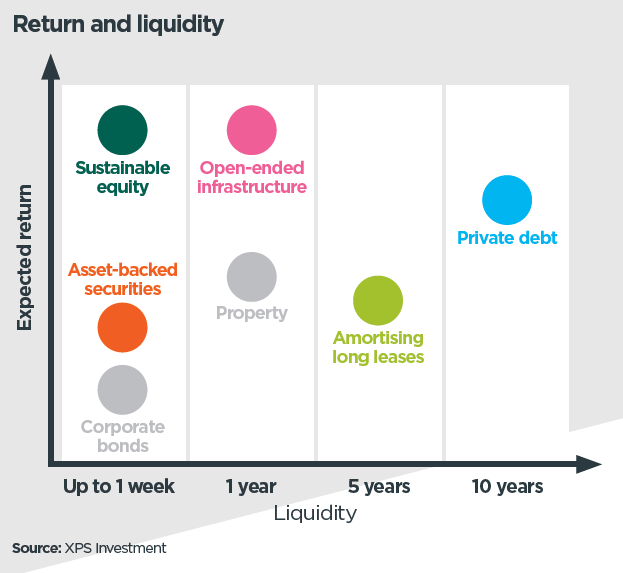Five investments that can support your scheme’s investment strategy
Five investments that can support your scheme’s investment strategy
30 Jun 2021
At a glance
Investment markets have seen significant expansion in recent years, with a wider range of products than ever before to meet investors’ needs
The introduction of sustainable equity funds provides opportunities to expand ESG investment options for your scheme
For schemes with timeframes beyond 10 years, private debt can provide returns in excess of those available on publicly traded markets for similar credit ratings
For schemes with liquidity constraints, open-ended infrastructure equity funds enable investment in infrastructure projects without the fund complexity and long lock-in periods usually seen in this space
For schemes looking for stable income, amortising long lease funds enable investment in property without the real estate market risk and provide a fixed income stream, like a bond but with a higher premium
The higher yields on asset-backed securities can be attractive, and new regulations have improved their transparency
How the five investments support strategy

How the five investments support strategy
The chart below shows where these asset classes sit in terms of their expected return and liquidity.

Actions employers can take
1. Determine whether your scheme’s cashflow profile and investment income are aligned, or if you could achieve a more stable yield on the scheme’s portfolio.
2. Assess your scheme’s liquidity headroom and consider if your scheme could take advantage of the illiquidity premium across a range of different assets with different risk and return profiles.
3. Consider ESG and sustainability focused funds, particularly in light of future climate-related disclosure requirements.
4. Engage with your trustees to explore opportunities, especially in light of the requirement to agree investment strategy under the upcoming new funding rules.
Comparing your portfolio income and pension outgo
Analysing your scheme’s expected benefit payments relative to expected investment income
can highlight gaps, risks and investment opportunities to improve cash flow matching.


Assessing your liquidity opportunity
Analysing how much headroom your scheme has to invest in illiquid assets can help you take advantage of the illiquidity premium.

This chart shows how quickly you could turn your current investments into cash if you needed to (shown in the pink line), and compares it to the cashflows needed to meet your benefit payments and any other obligations such as collateral for LDI hedging (the dark green block at the bottom). The gap between these lines shows the headroom between the amount of asset value the trustees could realise in that period and the relative outgo requirement in that same period.
For further information, please get in touch with Sian Pringle or Jim Heal or speak to your usual XPS Pensions contact.



